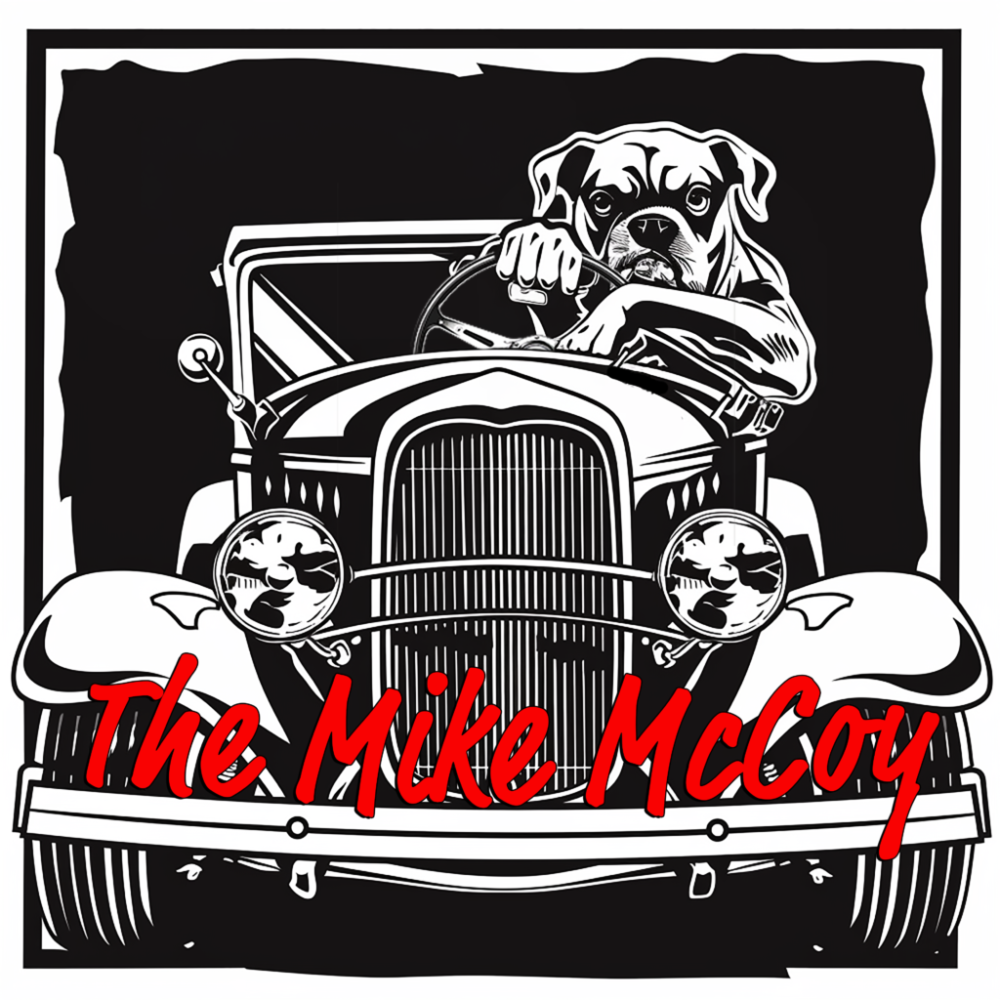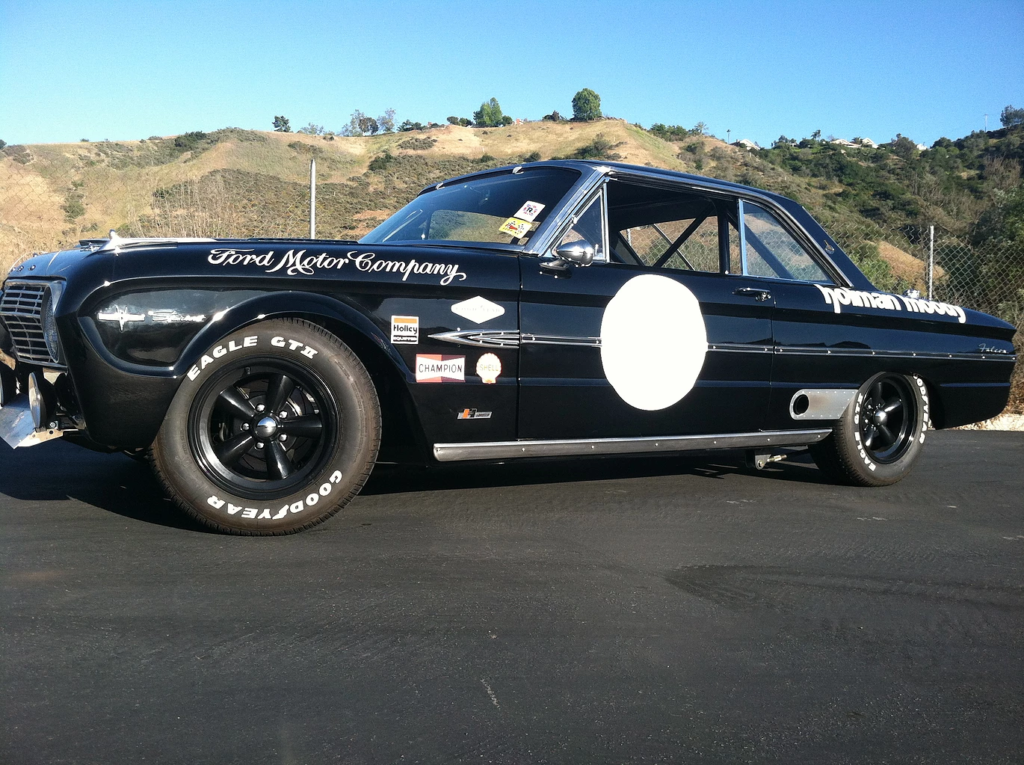My very first car was a 1963 1/2 Falcon Sprint, red on red with a tach on the dash and a three quarter chrome package from the factory. The car was my grandmother’s who bought it new back in the day. I took guardianship of the car during my senior year of high school and used some graduation money to have it cleaned up a bit and repainted. I still miss that car to this day. So, as I was strolling through memory lane and browsing the web, I stumbled across another beautiful 1963 Falcon. Black on black and race ready this thing was mean. Doing some more digging I found out more about that car and it’s builder Robert Brown. Robert owns a brand called VinRacer where they specialize in building vintage works of art. Robert’s story of turning a passion into a career is one that I’m sure we would all want to pursue. So I invited Robert to tell us his tale and some history around VinRacer. Enjoy!!!
VinRacer Robert Brown
Tell us a little about yourself?
50 Something software tech executive that has a passion for vintage race cars from the 50’6, 60’s and 70’s. My father and grandfather taught me how to build things with my hands when I was young, so I would buy three plastic car models and combine them into a one of kind design. I majored in engineering and design with the idea of building products and technology that was cool and would help people with their work and lives –
How did VinRacer get started?
I remember when my dad would take me out to Riverside Raceway when I was a kid and we would watch guys like Dan Gurney, Parnelli Jones and other rip around the track. Likewise, my dad had a 1963 Falcon Sprint as his first car and so when it came time to buy my first car, in high school I was able to find a 63 Falcon Sprint which I restored and sold. Fast forward to 6 years ago, those two episodes of my life collided when I found another 63 Falcon Sprint and wanted to build what I thought it might be a cool road racer, as an alternative to the Shelby GT350’s…since they shared the same underpinnings, and because I loved that one of one year body style. So I set about building the car but not doing it as a tribute, rather getting a GCR rulebook from SCCA from back in the day and seeing if I could build it like they did back then to go racing – old school, using vintage speed equipment, fab techniques, paint styles, tires, wheels, and even hand painting the graphics. The result was the #1 Falcon you see on our website. I had no intention of ever selling it but when people approached me at Cars and Coffee and said that car reminded them of when they were kids going to see racing and would I be interested in selling it. That’s when it dawned on me that there might be a special business here. Build one of a kind vintage racers for enthusiasts today. The rest is history and we are now on our 4th car. We build about 2 per year and each has its own number and a corresponding hand stamped build plate affixed to the car that matches the number on the door. The door number actually tells you which order the car was built in. There will never be a repeat number, and all cars come in triple black – wheels, body and interior.
What was it that sparked your interest in period correct racers?
I love all forms of racing. Frankly anything with a number on it is cool, cars, old mahogany boats, vintage off-road racers, rallye cars, vintage warbird planes, along with the old racing gear these guys would wear – metal flake helmets, goggles, boots, jeans and polos…VinRacer really exemplifies a brand of vintage racing from back in the golden era of racing.
Is it true that you once bumped into Dan Gurney at a car show? Yes. I was at the Car and Coffee show in Irvine, and he was driving through in a golf cart. I immediately knew who he was since he was sort my racing hero when I was a kid. The things he did in a car were so amazing and I had seen him on TV talk about his racing stories. He truly was a good ol boy of racing and accomplished so much. He drove the golf car by me and I said Hello Mr Gurney, and thank you for all you’ve done for racing. He addressed me saying “your car”, and I said “yes sir”. He responded “well done…that’s the way we used to build em and the way we used to race em”…I said thank you and asked if he would sign my dash. I was able to get photos of him and his thumbs up as he signed the glove box door. He was gracious and did so, in which after I had posted on Facebook of the experience. Of all people his son was at the show and thanked me for the kinds words. We later had conversation at the remaining Cars and Coffee shows. I was grateful for the experience. He is a true gentlemen racer.
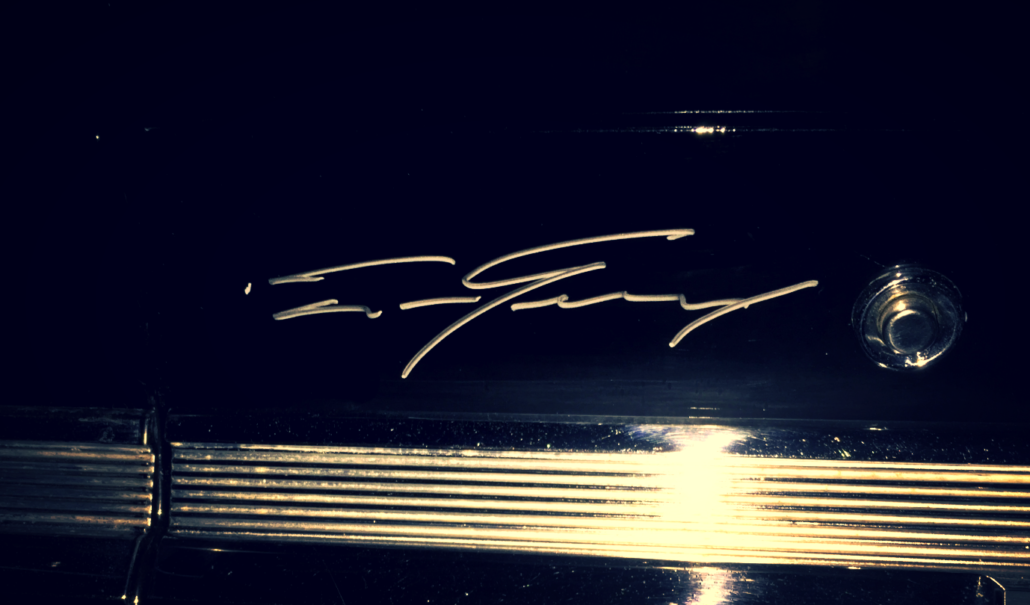
So tell us more about the cars themselves and what makes them so unique
we look for cars that would have been raced in the 50’s, 60’s and 70’s. Good bones and those that would have been legal to race in Europe, the US and elsewhere in road racing, track racing, off-road and rallye racing. These were typical cars that were street legal and modified for racing by adding parts and removing the street parts. The stories of Carol Shelby (another of my idols) who I had a chance to meet at the Beverly Hills Concourse show, when he was showing the history of Shelby Cobras and Mustangs, was another of my motivations. He would take parts from other cars, and bolts things on to see if it fits and if it did they would go racing. No “me too’ trailer queen parts from the Internet. Rather using NOS and refurbed junk yard parts added to a car. Minimal roll cages, no windows, wood rimmed steering wheels, American Racing Wheels, bias play style tires, no air conditioning, no radio – all the things we remember as kids but now make up a one of a kind build, built to an era correct rulebook. With our cars you can drive it on the track, or to Cars and Coffee. As we say “our cars are not for the timid – you better use two hands to turn it, two feet to stop it and better wear two pair of underwear when you drive it because things will happen right now”. The paint is all single stage (no clear coat) and polished out. We hand paint numbers and logos, source vintage graphics and find racing logo of companies from the day that were involved in racing. Interiors are stripped down but still use carpet for sound deadening. We remove rear seat and create a package tray that allows the exhaust to run up through the floor below the tray and out the side of the body. It improves ground clearance but is one of our signature designs. We don’t use fiberglass panels and construct our own sheet metals flares and chin spoilers and deck spoilers. All our parts are handmade where needed and we even leave some of the natural patina in the chrome, trim, glass, etc. No trailer queens here. Our touch up paint is even a black marker. We told a guy that and he asked, “Sharpie makes touch up paint?”…we said “no”, and he left confused. He did walk back and say…”now I get it…you don’t need touch up paint”.
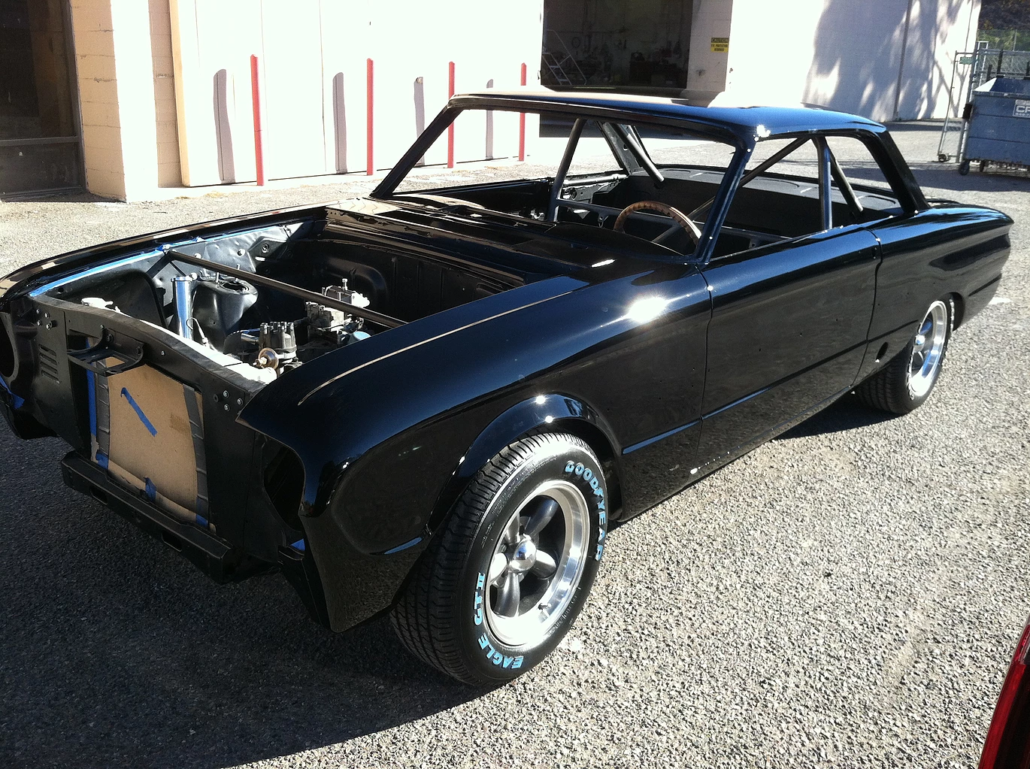
Are the cars both street legal and race ready?
Yes they carry full registration and can be taken to the track. They sort of follow the Gold Medallion Program with SVRA, where they are prepared to run mid at the end of the pack and not against the front pack guys that have their cars prepared and engineered as new race cars but in old bodies. I think SVRA does great things to bring old school vintage racing to the masses in its true form. If you were going to go full race, you would have to update the cars – and truth be told you can as we made provisions with things like using fuel cells, and proper cage designs that can be upgraded to modern rule books from the sanctioning bodies.
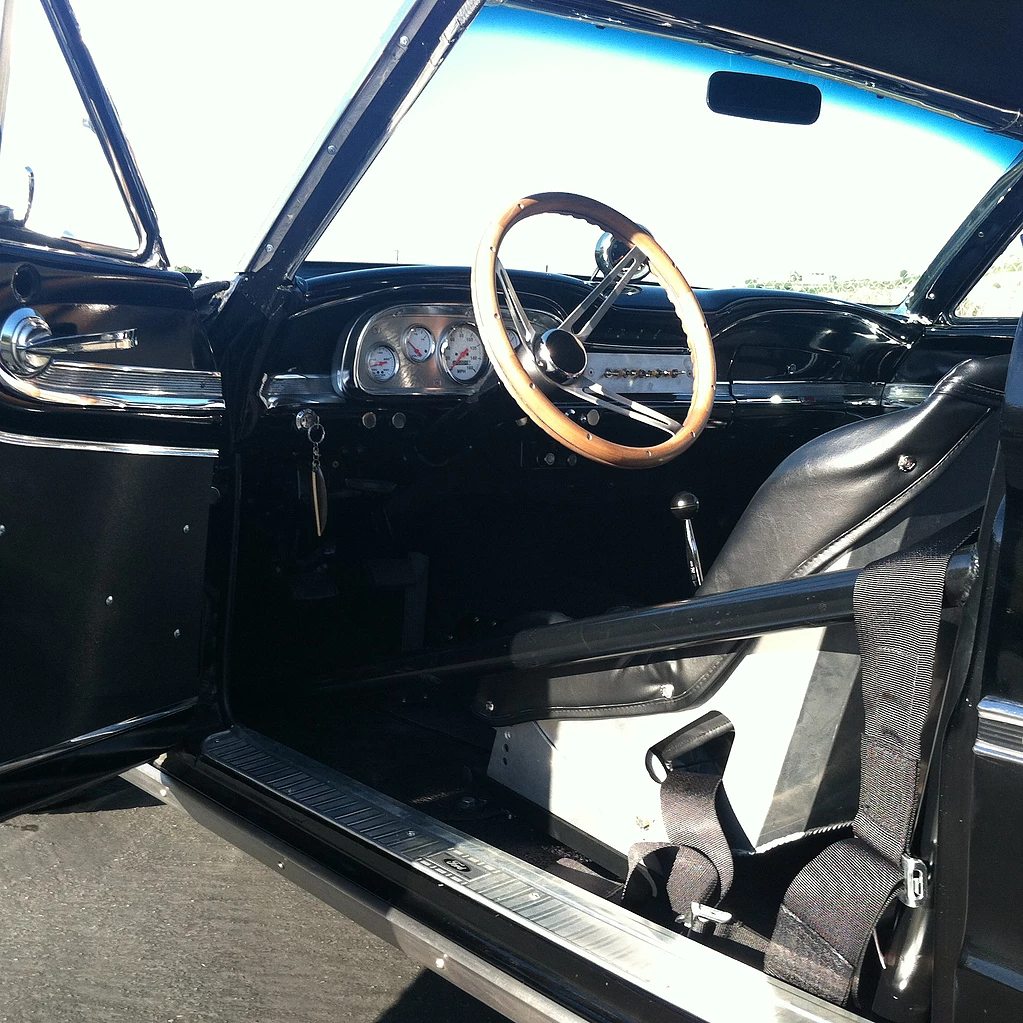
Have you ever built a car as a request from a customer, or do you only sell cars you’ve already built?
We tend to build cars that we create and package, but we are starting to get requests from Europe for cars that could compete in FIA qualified racing, as well as for promotional cars that companies are interested in.
If you could build an “ultimate VinRacer” what would you build?
Truthfully, all the cars represent an era so they are all ultimate cars. My true favorite in a USRRC 289 Cobra. The problem is you can’t build that car, except for buying a kit and modifying it to become old school. We might just do that so stay tuned. My favorite vintage car to build is the 1963 ½ Ford Falcon Sprint with 289 and 4 speeds. Great one of one year and I like the uniqueness.
What’s next for VinRacer?
As I said, we are about a vintage racing brand. Much like DEUS Ex Machina seems to be memorializing with motorcycles, and companies like Iron and Resin. We envision working with these companies including those like Tellason Jeans which my buddy owns to create a line of clothing that follows the style of the cars – vintage t’s with racing logo;s, demin, boots, vintage watches, old helmets, leather log books…stuff that ties vintage race cars to a lifestyle. It is, as a matter of fact well underway now. It’s sort of a throwback to the cool factor of Steve McQueen which is another of my style heroes.
What is the best way for our readers to see your work or buy one of your vehicles?
We are happy to have readers come visit. We do that by appointment at our shop in Anaheim CA and also attend the cars show circuit in Southern California. We are always available to chat by email ([email protected]) and phone 949-294-8232 and can discuss you’re vision, passion and a build that is truly one of a kind – we build vintage speed.
